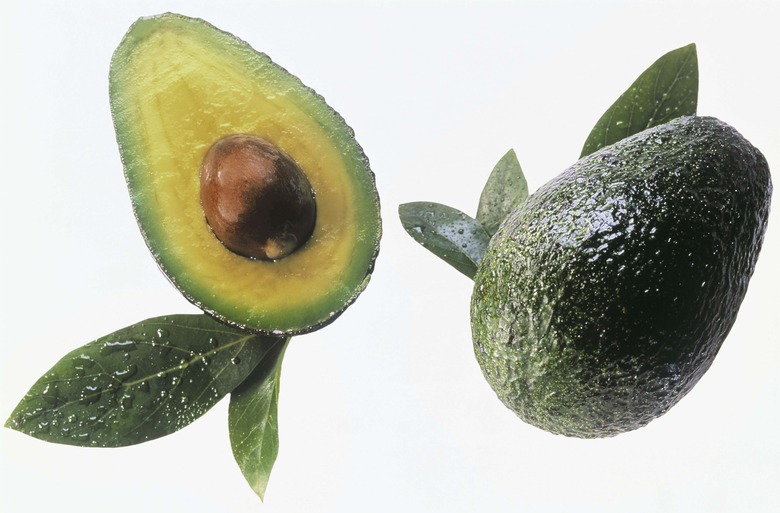What Does An Overwatered Avocado Tree Look Like?
Many a mom carries on the family tradition of helping her kids grow an avocado plant (Persea americana) from its large seed by suspending it with toothpicks in a glass of water on a window sill. The avocado with its lush dark-green leaves makes a handsome houseplant or fruit-bearing tree. The sub-tropical plant is winter-hardy in U.S. Department of Agriculture plant hardiness zones 10 and 11. Due its shallow roots, it's easy to overwater an avocado. Some of the symptoms of an overwatered avocado tree are on the surface and hard too miss, but you may have to dig deeper.
Thirsty Leaves, Drenched Roots
Step 1
Too much water leads to root rot in avocado trees. When the roots can't perform their function of supplying water to the leaves, the leaves curl and turn yellow or brown. If your tree grows new leaves at all, they will be small and sparse, and the stems leading to the leaves will be soft the touch. If you water your avocado tree and the leaves don't perk up, your tree is suffering from root rot due to overwatering.
- Many a mom carries on the family tradition of helping her kids grow an avocado plant (Persea americana) from its large seed by suspending it with toothpicks in a glass of water on a window sill.
- If you water your avocado tree and the leaves don't perk up, your tree is suffering from root rot due to overwatering.
Treatable Symptoms, Deeper Causes
Step 1
One disease caused by overwatering affects the bark of avocado trees. Effected trees secrete a gum that hardens into small beads on the tree's bark. You may also notice a white, powdery substance on the tree. These symptoms appear on the bark suddenly and spread quickly. The disease itself doesn't cause much damage to the tree, and you can cut the effected area out of the bark without hurting the tree. However, the presence of the disease indicates the more serious issue of root rot.
The Root of the Matter
Step 1
The major diseases of avocado trees come from fungi that develop when the soil is too moist. If you suspect your tree is overwatered, an investigation of the tree's roots will likely reveal a sparse root system. The few roots left behind will be black and brittle from disease.
- One disease caused by overwatering affects the bark of avocado trees.
- The major diseases of avocado trees come from fungi that develop when the soil is too moist.
Ounce of Prevention
Step 1
Chances are, you can water your avocado tree less often than you think. For most of the year, watering every seven to 10 days should suffice. In the hottest months of summer, water every three to four days to maintain moist, not saturated, soil. The best way to test whether you need to water your avocado tree is to dig into the soil to a depth of 6 inches. If you can squeeze the soil into a ball, wait a day or two to water again. Soil that crumbles in your hands needs water.
References
- Purdue University Horticulture and Landscape Architecture: Avocado
- University of California Agriculture and Natural Resources: Avocado Root Rot (Phytophthora Root Rot)
- California Avocado Association: A Bark Disease of Avocado Trees
- Avocadotrees.com: Planting and Growing Instructions
- Cal Poly Urban Forest Ecosystems Institute: Avocado
- Aggie Horticulture: Avocado
- California Avocado Commission: How to Grow Your Own Avocado Plant
